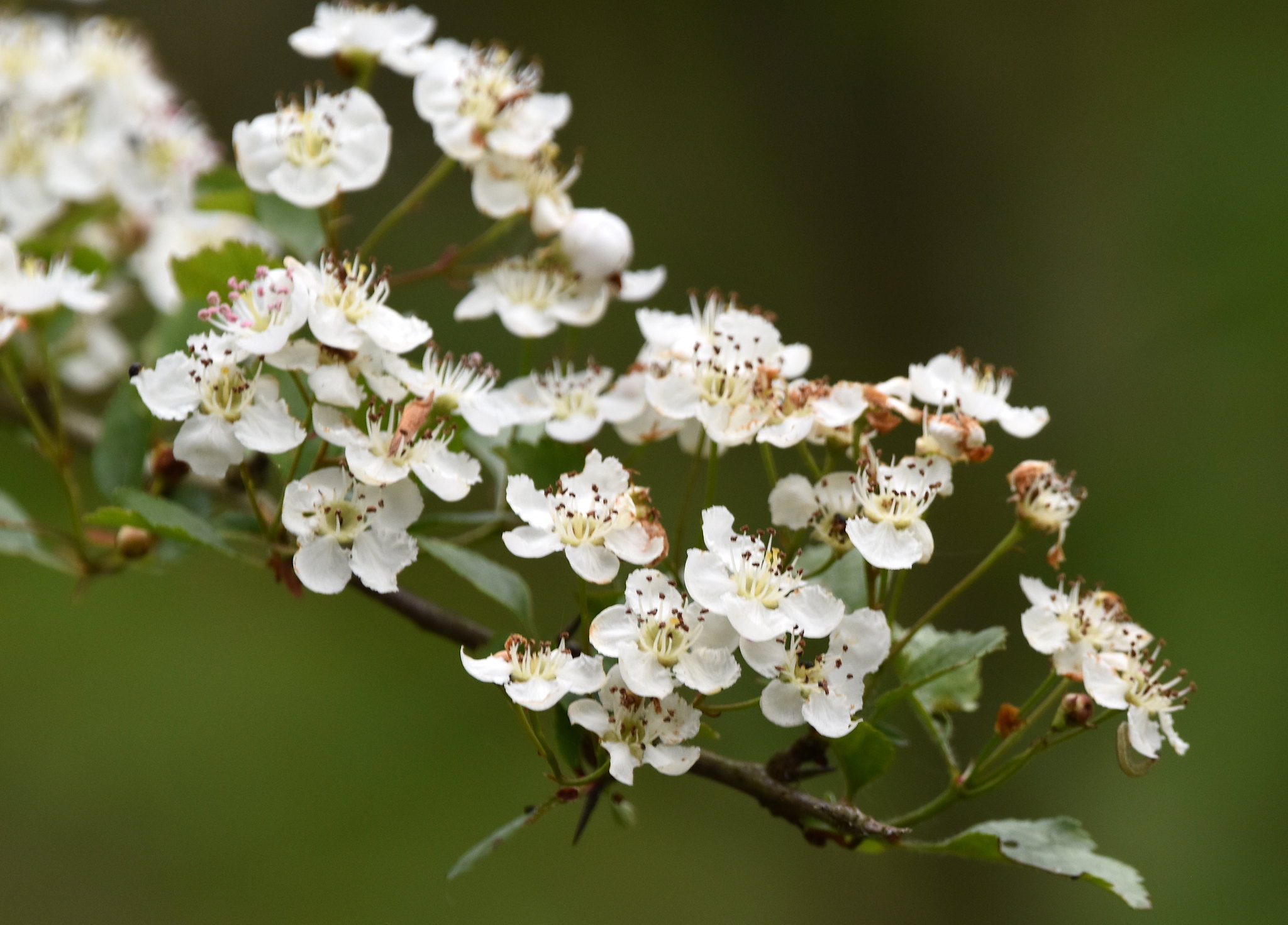
How to pair Hawthorns?
Discover all our tips for pairing these beautiful thorns in the garden!
Contents
Hawthorns, these small countryside trees, deciduous and with thorny stems, adorn themselves with a beautiful flowering in May, followed in September by berries highly appreciated by birds. The common hawthorn can often be found along paths or in hedgerows, whether it is the white hawthorn: Crataegus monogyna, or the pink hawthorn like Crataegus laevigata ‘Paul’s Scarlet’.
It has always been recognised for its medicinal properties, and the herbal tea made from dried flowers and leaves has relaxing qualities to combat stress.
Hawthorns are easy to cultivate, which will please all gardeners, whether amateur or experienced, and can find their place in the garden in a variety of situations.
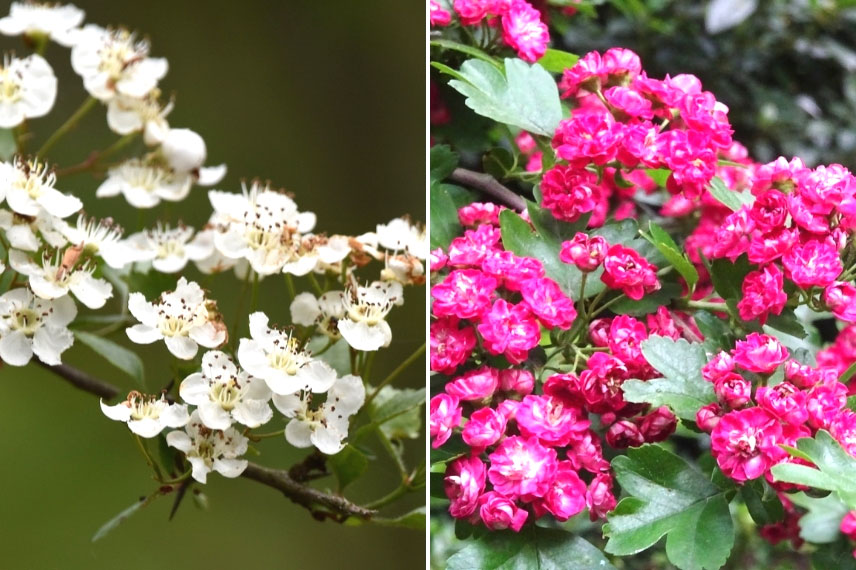
Crataegus monogyna and laevigata in flower
In a country hedge
The trend is towards planting natural hedges, which provide shelter and food for insects, birds, and small mammals. These hedges give the garden a bucolic appearance, serve as a biodiversity refuge, and can also function as windbreaks. A significant advantage is that the natural growth of the plants that make them up helps to limit maintenance, thus sparing the gardener from tedious pruning sessions!
Flowering hawthorns attract pollinating insects, and their edible berries delight a multitude of birds. They can be grown in association with other wild shrubs, such as:
- dogwoods (Cornus mas, Cornus sanguinea…),
- lilacs (Syringa vulgaris),
- serviceberries (Amelanchier canadensis, Amelanchier Lamarckii…),
- viburnum (Viburnum lantana),
- hornbeam (Carpinus betulus),
- common hazel (Corylus avellana), purple or twisted,
- elder (Sambucus nigra),
- bay laurel (Laurus nobilis).
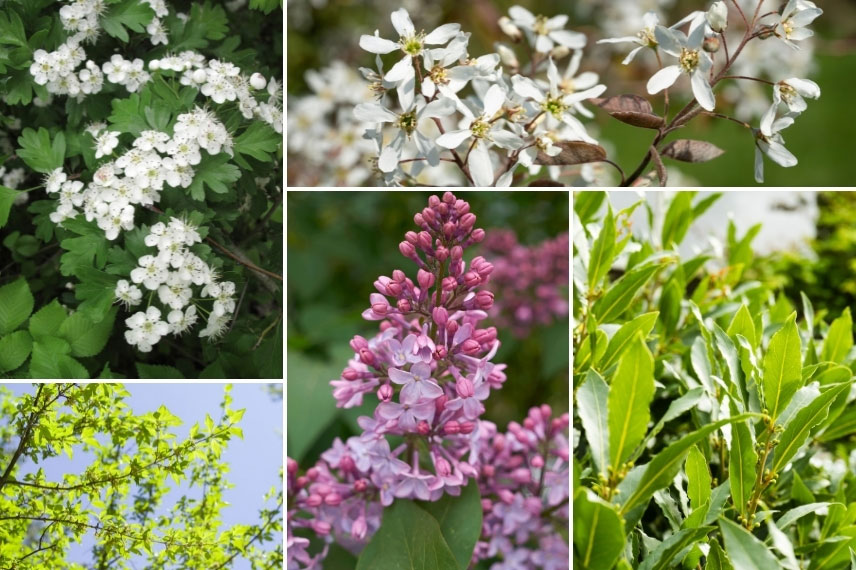
Crataegus monogyna, Cornus mas, Amelanchier canadensis, Syringa vulgaris and Laurus nobilis
Crataegus monogyna and Crataegus coccinea (scarlet hawthorn) tolerate periods of extreme summer drought very well and are particularly resistant to difficult conditions, so they can be planted in a free hedge in a more Mediterranean climate and in drier soil with:
- oleaster (Eleagnus ebbingei),
- laurustinus (Viburnum tinus),
- crape myrtle (Lagerstroemia indica ‘Violacea’),
- strawberry tree (Arbutus unedo),
- Brazilian guava (Feijoa sellowiana),
- sea buckthorn (Hippophae rhamnoides),
- pomegranate (Punica granatum).
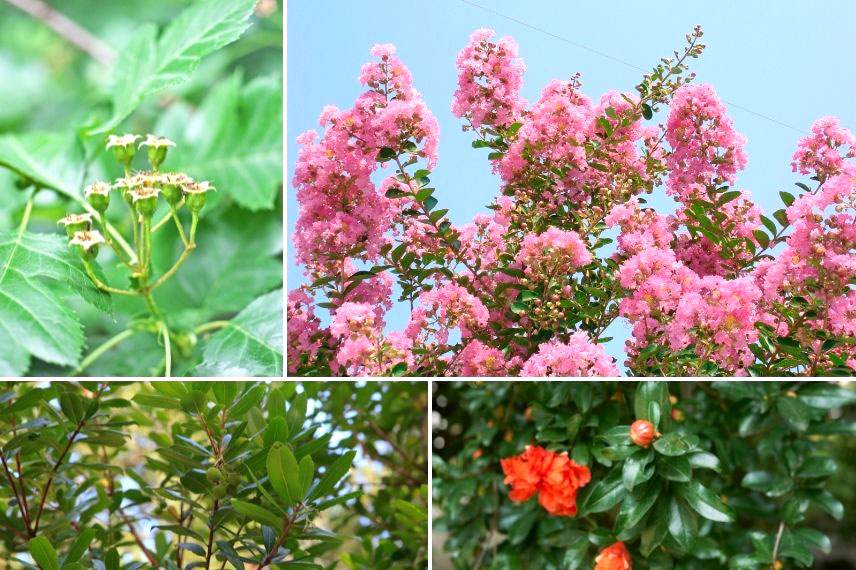
Crataegus, Lagerstroemia indica, Arbutus unedo and Punica granatum
In the composition of this style of hedges, it is preferable to choose “sequences” of plants that will be repeated, especially if the length of these is significant. It is not about selecting all the plants available in the catalogue and planting them in alignment, but rather selecting a few, whose flowering will harmonise with each other, and choosing foliage that will enhance these flowers. The evergreens (about one third of the plants in the hedge) will help to structure the whole and maintain winter interest.
Crataegus laevigata will reach a height of 2 to 6 metres in the hedge, with a beautiful bright white flowering in spring, and the scarlet hawthorn (Crataegus coccinea) will take on a bright yellow to orange autumn colour. Its small, remarkable, and attractive fruits are a beautiful scarlet red.
Due to its abundant fruiting rich in vitamin C, allowing for the making of jams, jellies, and compotes, the Chinese hawthorn (Crataegus pinnatifida ‘Big ball’) will find its place in an edible wild hedge.
As a defensive hedge
The thorny hedge serves both to protect the privacy of the garden and to prevent intrusions, whether from two-legged or four-legged animals! It is the density of the vegetation and its thorny character that allow it to protect the garden or part of it. Traditionally, you will find pyracantha and berberis, but you can also associate it with hawthorn:
- with holly (Ilex aquifolium),
- with holm oak (Quercus ilex),
- with thorny orange (Poncirus trifoliata),
- with blackthorn (Prunus spinosa),
- with Osage orange (Maclura pomifera).
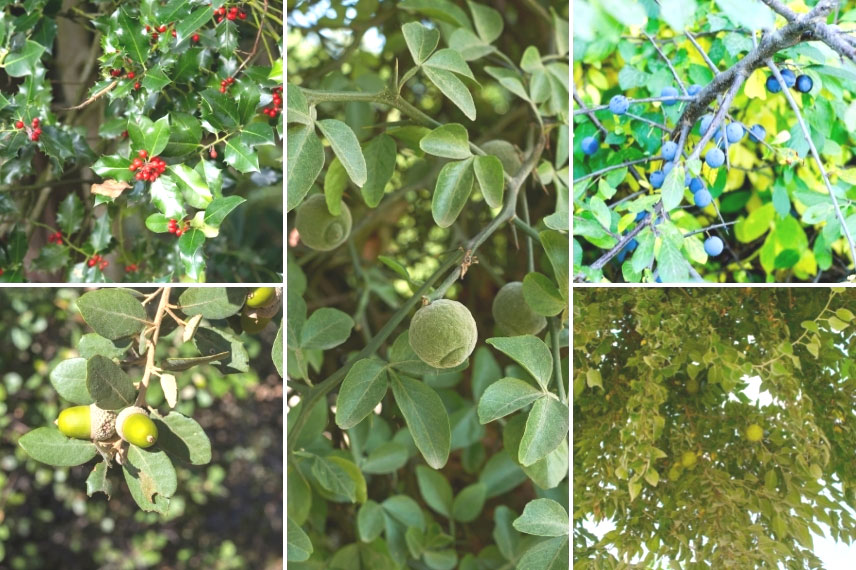
Ilex aquifolium, Quercus ilex, Poncirus trifoliata, Prunus spinosa, Maclura pomifera
Discover other Hawthorn Crataegus
View all →Available in 1 sizes
Available in 1 sizes
Available in 1 sizes
Available in 3 sizes
Available in 1 sizes
Available in 3 sizes
Available in 1 sizes
Available in 1 sizes
Available in 1 sizes
Available in 1 sizes
To punctuate and structure a flower bed
Hawthorn can be considered a small-growing tree as its height rarely exceeds 8 to 10 metres. It can be trained as a small standard tree by removing lateral branches as it grows. This makes it suitable for planting in the background of a flowerbed, and it is perfect for small gardens! The advantage of hawthorn is that it is very resilient, hardy, and low-maintenance. It can therefore be planted in a variety of conditions: in calcareous or clay soil, in full sun or partial shade, in urban or rural settings, and even in wooded areas as it copes well with root competition.
Crataegus prunifolia – white-flowered hawthorn – is a small tree with upright main branches, displaying a vibrant red-orange autumn colour. To create a flowering bed that is easy to maintain and prolific, you can space two or three of these above a mass planting of low-maintenance bulbs and perennials such as Allium, white valerian (Centranthus ruber ‘Albus’), and Nepeta ‘Six Hills Giant’. For a more structured and refined effect, the front of the bed can be punctuated with balls of boxwood or Myrsine africana, or even small-leaved privet (Ligustrum delavayanum) in a half-standard ball shape.
With its double flowering of a beautiful, bright pink in May-June, Crataegus laevigata ‘Rosea Flore Pleno’ can structure a bed bordering a linear path, whether paved or gravelled, alongside old roses (Rosa ‘Cuisse de Nymphe’), wormwoods (Artemisia ludoviciana ‘Silver Queen’), campanulas (Campanula persicifolia), hardy geraniums (Geranium sanguineum and himalayense ‘Derrick Cook’) and lavenders (Lavandula angustifolia ‘Munstead’).
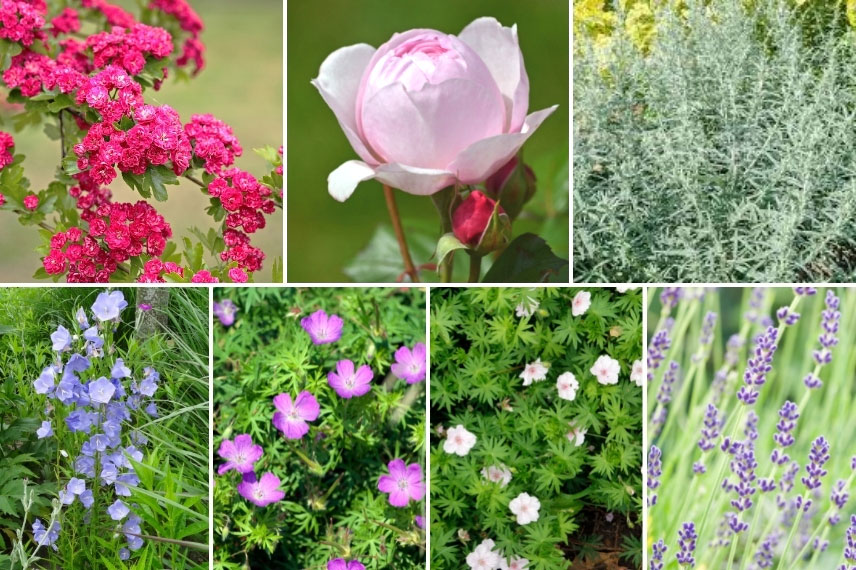
Succession of flowerings: Crataegus laevigata ‘Flore Pleno’, Rose ‘Cuisse de Nymphe’, Artemisia ludoviciana ‘Silver Queen’, Campanula persicifolia, Geranium sanguineum and G. himalayense ‘Derrick Cook’ and Lavandula angustifolia ‘Munstead’
Trained as coppiced, Crataegus lavallei ‘Carrierei’, with white flowers, or Crataegus laevigata ‘Paul’s Scarlet’, with dark pink flowers, will find their place in a wild garden bed, alongside grasses planted in masses at the base (Pennisetum alopecuroïdes ‘Japonicum’).
Read also
When and how to plant a hawthorn hedge?In a trimmed hedge
It is often the Hawthorn or White Thorn (Crataegus monogyna) that is used for trimmed hedges. It can be planted in a double rank hedge, associated with Hornbeam (Carpinus betulus), for example. The two foliage types, one small and lobed for the hawthorn and the other ovate and larger for the hornbeam, will harmoniously complement each other, and the spring flowering of the hawthorn will be quite striking! Pruning should be done after flowering to avoid compromising that of the following year, but this may affect fruiting.
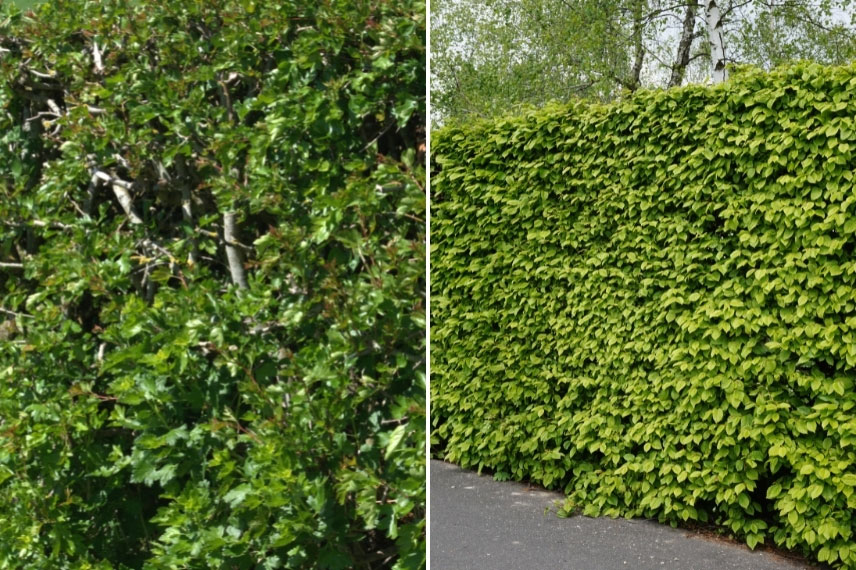
Hawthorn and hornbeam create beautiful trimmed hedges
In an autumnal setting
In autumn, hawthorns don beautiful vibrant colours, enhanced by their red fruits that persist for part of the winter. This is a great opportunity to combine them with other plants for a stunning late-season display.
Crataegus lavallei ‘Carrierei’ is a large bush or small tree, reaching 5 to 7 m, with a rounded habit and dense branches. In autumn, it bears a multitude of bright orange-red fruits that persist for part of the winter. Birds greatly appreciate this larder. It can be paired with:
- Witch Hazel – Hamamelis mollis ‘Pallida’, which first brightens the garden with its golden-yellow foliage in autumn, then offers an incomparable fragrant yellow-orange flowering in the heart of winter,
- Winged Spindle – Euonymus alatus – a small bush of 2 m with a spherical habit, whose deciduous foliage turns a deep purple-red,
- and Autumn Stonecrop – Sedum spectabile ‘Septemberglut’ – which will provide contrast in the foreground with its mass of tender green fleshy leaves bearing beautiful deep pink flat inflorescences from late summer until frost. This is a very easy-to-grow perennial that will enhance borders in late season.
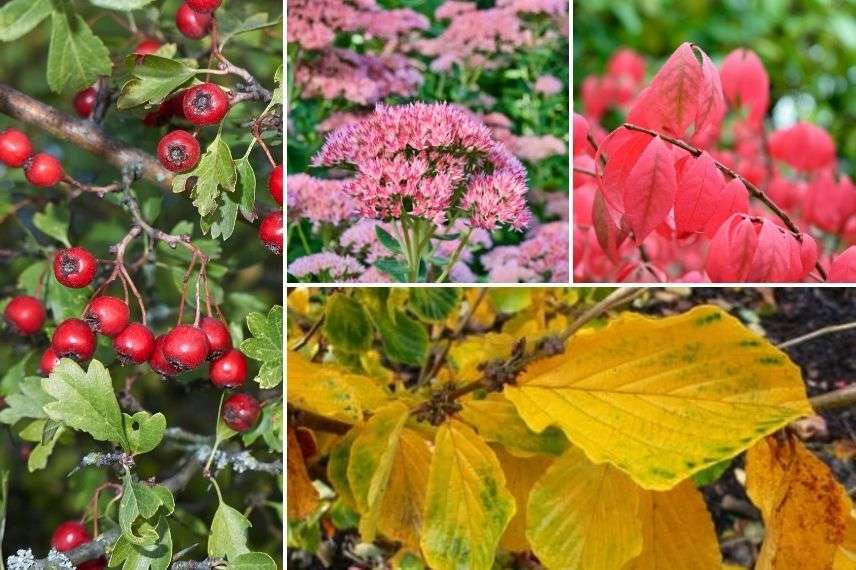
Crataegus lavallei ‘Carrierei’, Sedum spectabile ‘Septemberglut’, Euonymus alatus, and autumn foliage of Hamamelis mollis ‘Pallida’
- Subscribe!
- Contents
![[plant_selector label="Spike" placeholder="Choose a plant" multiple="true"]](https://www.promessedefleurs.ie/blogwp/wp-content/uploads/2021/09/Aubepine-Associer-1.jpg)































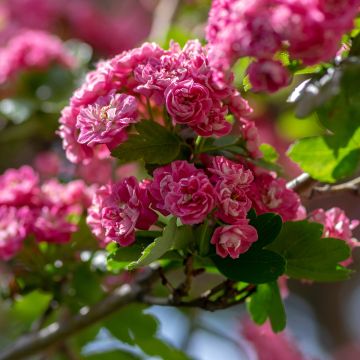
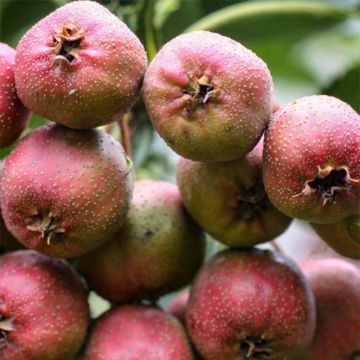
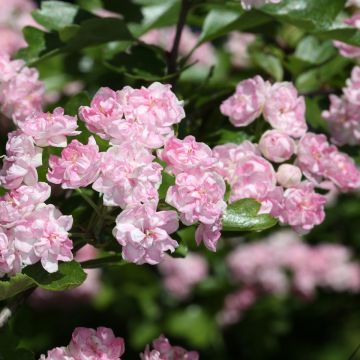
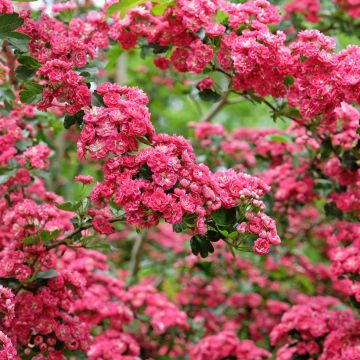
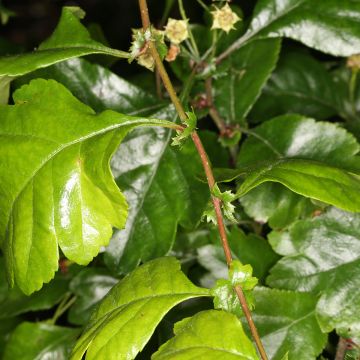
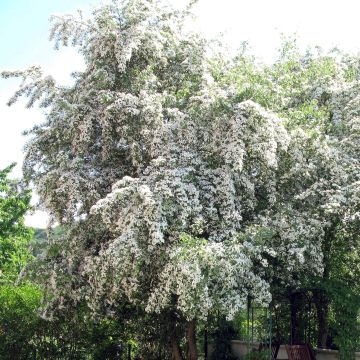
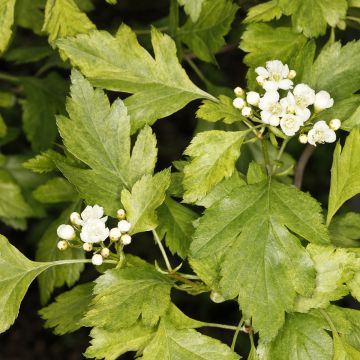
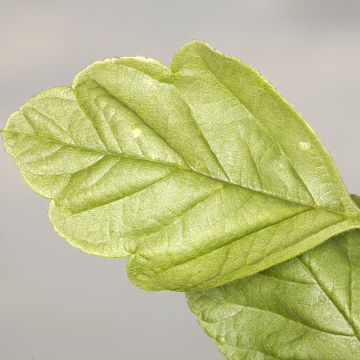
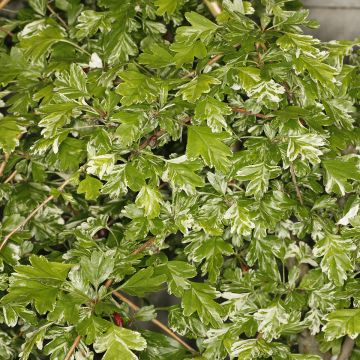
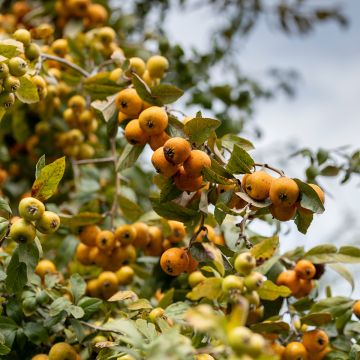
Comments